I have been working on creating a heatmap for a few days and I cannot get the final formating of gridlines to work. See the codes and attached plots below. What I am trying to do is to align the gridline along the tiles of the heatmap using geom_tile() so each tile fills the inside of the grid in a box way. I was able to align the gridlines using geom_raster() but the y-axis label ticks at either the top or the bottom of the tile but I need it to tick at the center (See red highlight), also I cannot get geom_raster to wrap a white line border around the tiles so the color blocks looks a bit disorganized in my original dataset. Would be grateful for any help with the formatting codes. Thanks very much!
#The data set in long format
y<- c("A","A","A","A","B","B","B","B","B","C","C","C","D","D","D")
x<- c("2020-03-01","2020-03-15","2020-03-18","2020-03-18","2020-03-01","2020-03-01","2020-03-01","2020-03-01","2020-03-05","2020-03-06","2020-03-05","2020-03-05","2020-03-20","2020-03-20","2020-03-21")
v<-data.frame(y,x)
#approach 1 using geom_tile but gridline does not align with borders of the tiles
v%>%
count(y,x,drop=FALSE)%>%
arrange(n)%>%
ggplot(aes(x=x,y=fct_reorder(y,n,sum)))+
geom_tile(aes(fill=n),color="white", size=0.25)
I have tried running similar codes from another post but I wasn't able to get it to run properly. I think because my x variable is a count variable of y variable so cannot be formatted into a factor variable to specify xmin and xmax in geom_rect()
#approach 2 using geom_raster but y-axis label can't tick at the center of tiles and there's no border around the tile to differentiate between tiles.
v%>%
count(y,x,drop=FALSE)%>%
arrange(n)%>%
ggplot()+
geom_raster(aes(x=x,y=fct_reorder(y,n,sum),fill=n),hjust=0,vjust=0)



